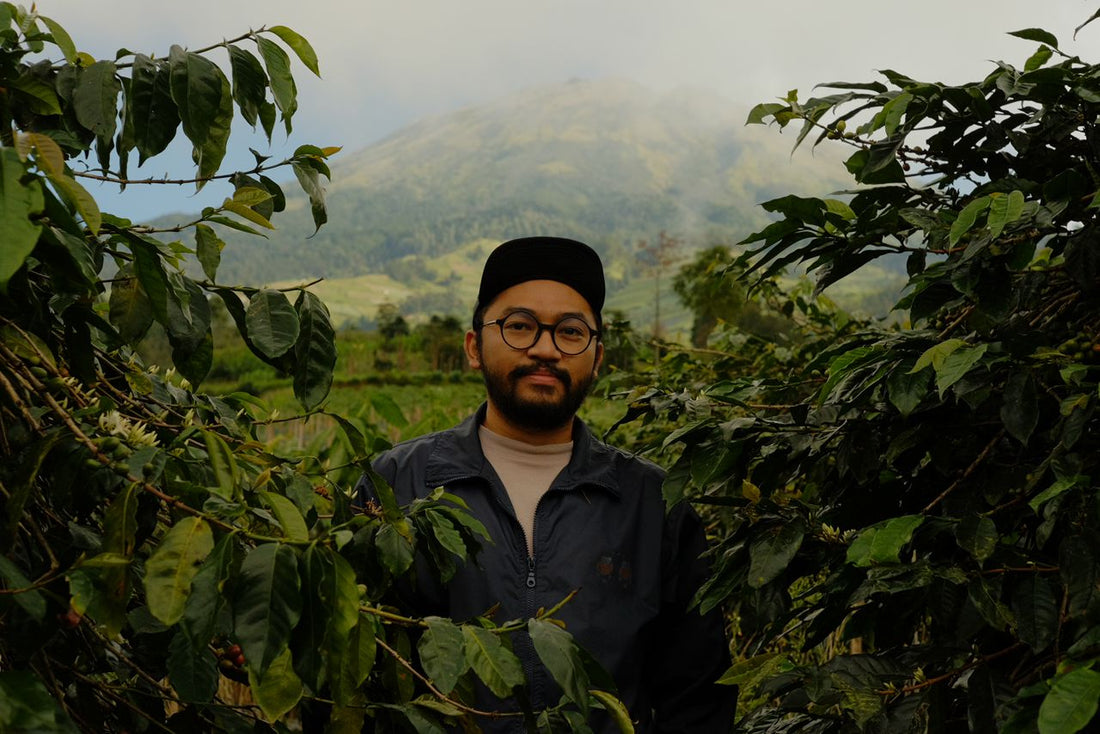
The Story of Kaliangkrik: From First Light to the Last Cherry
Share
Every year, I make it a point to travel to Central Java. It’s a journey that keeps me grounded, reminding me where coffee begins — not in a café or roastery, but on the farms, in the hands of the people who grow and process every single cherry. 2025 was no different, and this year my first trip was in June, right at the start of the harvest season. My destination: the misty mountains of Kaliangkrik, and later, the villages of Jlegong and Bejen, before wrapping up at Jogja Coffee Week (JEC).
Kaliangkrik is a place that always takes my breath away. As the road winds higher into the mountains, the air turns cool and the scenery changes — dense greenery, small villages, and finally, rows of coffee trees stretching across steep slopes. This region is home to Kaliangkrik Java Coffee, led by Mas Rinto and the team at Kelompok Tani Mekar Lestari. Their story is one of transformation, shifting the community away from crops like tobacco and toward specialty coffee, creating better livelihoods and a stronger future for local farmers.

In June, the harvest had just begun. The energy was electric — farmers moving quickly, baskets filling with the season’s first ripe cherries. The mornings were cold and misty, while afternoons brought bright sun, perfect for natural drying on raised beds. These early harvest coffees were exciting to taste: vibrant and lively, with bright floral notes and fresh fruitiness. It felt like the opening lines of a book, full of potential and promise.
Three months later, I returned to Central Java for the late harvest in September. By then, the farms felt completely different. The cherries had matured fully, and the atmosphere was calmer, more focused. Farmers picked with great precision, selecting only the deepest red, fully ripe cherries. The drying beds overflowed, releasing a rich, sweet aroma that carried through the cool mountain air. The results in the cup were incredible — grilled pineapple, guava, tangerine, and brown sugar — flavors that perfectly captured the soul of Kaliangkrik at its peak.
Before Kaliangkrik, we traveled to Jlegong and Bejen, home to JB Coffee, led by Reza Nurullah. JB Coffee is known for its forward-thinking approach to processing and its dedication to quality. It’s also the farm that supplied Liberica beans for Elysia Tan’s routine at the World Brewers Cup (WBrC) 2025, placing Central Java coffee on a truly global stage. Standing there, it was inspiring to see the same dedication to excellence that drives competition-level coffees being applied to the day-to-day work of the farm.
My September journey ended at Jogja Coffee Week, held at the Jogja Expo Center (JEC). After days (read : 3 days) spent in the mountains, surrounded by the quiet rhythm of farm life, the event felt like a celebration. Roasters, producers, and coffee enthusiasts came together to share ideas, taste new coffees, and connect. It was a reminder of how interconnected the coffee world is — from the misty hills of Kaliangkrik to cafés serving these coffees to customers around the world.

Coffee farming teaches patience. The farmers plant seeds, nurture young trees for years before the first harvest, and depend on unpredictable weather. Their livelihood is built on faith—trusting that what they cannot control will still work out. When you see the hands that pick each cherry, the long hours of labor, and the care behind every step, you can’t take a cup of coffee for granted anymore.
It’s a humbling moment—like witnessing grace in action. God’s presence can be felt in that gratitude, reminding us to appreciate the blessings in everyday things.
This mirrors our spiritual journey. Just like farmers tend to their crops, we must tend to our inner lives, trusting that the harvest will come in its time. Seeing this process firsthand can remind you of how faith works quietly and steadily, even when results are not immediate.
Visiting Central Java twice in one season gave me a full view of the harvest cycle. June was about beginnings, with vibrant, fresh flavors, while September revealed the final crescendo, when the cherries reached their sweetest and most complex stage. Each trip deepened my respect for the farmers and producers like Mas Rinto and Reza Nurullah, whose work brings these coffees to life. Now, when I roast these beans back home, I think of those misty mornings, the patient hands picking each cherry, and the shared dream that connects us all — from first light to the very last cherry.
- Izham
